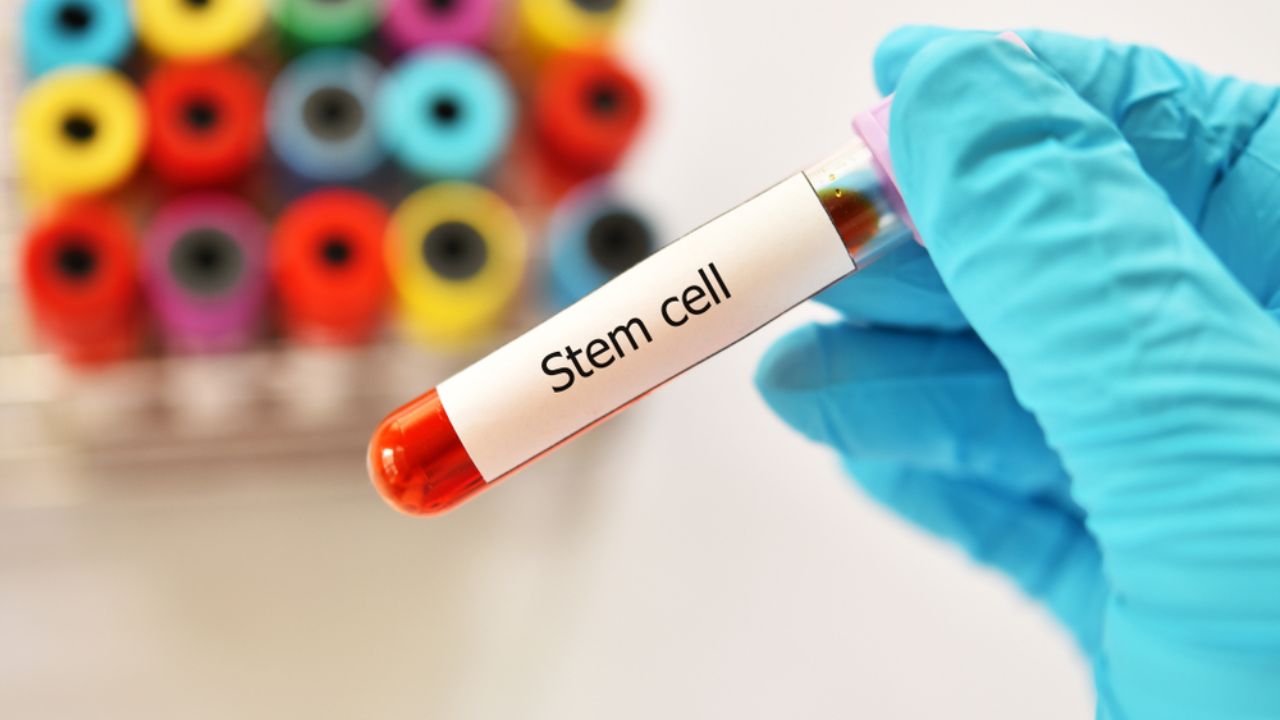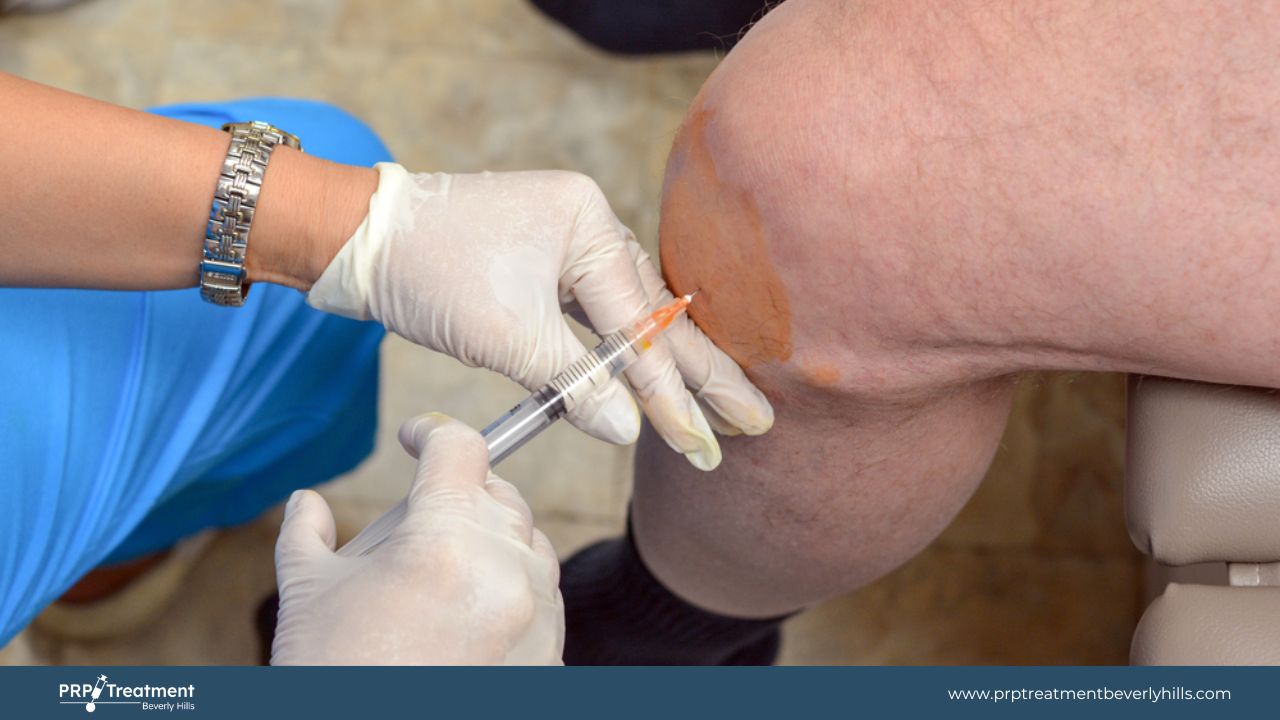PRP and stem cell therapies harness the body’s innate ability to repair and regenerate damaged tissues, offering promising treatment options for various medical conditions.
However, understanding the key differences between these two therapies can be challenging. This blog post will provide an in-depth comparison of PRP and stem cell therapy, exploring their unique benefits, limitations, and applications.
We aim to empower you with the knowledge to make informed decisions about these innovative treatment options and guide you toward optimal health and well-being.
Understanding PRP Therapy
Platelet-Rich Plasma, or PRP, is a concentrated solution of platelets derived from a patient’s blood. Platelets are small blood cells that play a crucial role in the body’s natural healing processes, as they release growth factors and other proteins that promote tissue repair, reduce inflammation, and stimulate new blood vessel formation.
Common Uses and Applications of PRP Therapy
PRP therapy has gained popularity recently for its wide range of applications, particularly in orthopedics, sports medicine, aesthetics, and hair restoration. Some common uses of PRP therapy include:
- Treatment of joint and tendon injuries: PRP injections can help accelerate the healing of injured tendons, ligaments, and cartilage in conditions such as tennis elbow, rotator cuff injuries, and osteoarthritis.
- Sports medicine: Athletes often turn to PRP therapy to speed up recovery from sports-related injuries and return to their optimal performance faster.
- Aesthetic treatments: PRP therapy is used in various aesthetic procedures, such as the “Vampire Facelift,” to rejuvenate the skin, reduce wrinkles, and improve skin texture.
- Hair restoration: PRP injections have shown promising results in promoting hair growth and reducing hair thinning for patients experiencing hair loss.
Understanding Stem Cell Therapy
Stem cells are unique cells with the remarkable potential to develop into many different cell types in the body. They serve as a repair system, replenishing specialized cells and maintaining the normal turnover of tissues and organs.
Stem cells can be classified into two main types: adult stem cells and embryonic stem cells. In stem cell therapy, these cells are harnessed for their regenerative abilities to treat various medical conditions.
Common Uses and Applications of Stem Cell Therapy
Stem cell therapy has been explored in a wide range of medical conditions, including:
- Orthopedics: Stem cell therapy has shown potential in treating various orthopedic conditions, such as osteoarthritis, degenerative disc disease, and bone fractures, by regenerating damaged tissue and promoting the healing process.
- Neurological disorders: Researchers are investigating the potential of stem cells in treating conditions like Parkinson’s disease, multiple sclerosis, and spinal cord injuries by replacing damaged nerve cells and restoring lost functions.
- Cardiovascular diseases: Stem cells may help regenerate damaged heart tissue, improve blood flow, and reduce scar tissue in patients with heart disease or after a heart attack.
- Autoimmune diseases: Conditions like rheumatoid arthritis and lupus could benefit stem cell therapy, as it may help modulate the immune system and repair damaged tissues.
Comparing PRP and Stem Cell Therapy
PRP and stem cell therapy have prominent differences, like the application and outcome. We have rounded up the most significant differences for your convenience.
Effectiveness in Various Medical Conditions
Orthopedics
PRP and stem cell therapies have shown potential in treating orthopedic conditions such as osteoarthritis and tendon injuries. While PRP therapy focuses on delivering growth factors to stimulate healing, stem cell therapy aims to regenerate damaged tissue by differentiating it into specialized cells.
Some studies suggest that combining PRP with stem cell therapy may enhance the effectiveness of treating orthopedic conditions.
Sports Medicine
PRP therapy is often used in sports medicine to accelerate recovery from sports-related injuries. In contrast, stem cell therapy may be more suitable for severe or chronic injuries that require tissue regeneration. The choice between these therapies often depends on the severity and nature of the injury, as well as the patient’s overall health and preferences.
PRP vs Stem Cell for Hair Restoration
PRP therapy has gained popularity in treating hair loss by stimulating hair follicle growth, while stem cell therapy is still in its early stages of research for this application. Currently, PRP therapy is more established and accessible for hair restoration, although future advancements in stem cell therapy may offer additional treatment options.
PRP vs Stem Cell for Back Pain and Chronic Pain Management
PRP and stem cell therapies have been explored for managing chronic pain resulting from various conditions, such as degenerative disc disease and osteoarthritis. While both therapies aim to reduce inflammation and promote tissue repair, choosing between them may depend on factors like treatment availability, cost, and patient preferences.
Safety and Potential Side Effects
PRP therapy is generally considered safe, as it uses the patient’s blood, reducing the risk of infection and adverse reactions. Potential side effects are usually mild and may include pain, swelling, or bruising at the injection site.
Stem cell therapy has a relatively low risk of side effects, especially when using adult stem cells. However, potential complications can include infection, immune reactions, or, in rare cases, the formation of tumors. The risk profile for stem cell therapy may vary depending on the source of stem cells and the specific treatment.
Treatment Duration and Recovery Time
PRP therapy typically involves a single injection, which takes about an hour, including preparing the PRP solution. Recovery time is minimal, with most patients resuming their normal activities within a few days.
Stem cell therapy procedures can vary in duration, depending on the source of stem cells and the specific treatment. Recovery time may also vary, with some patients experiencing faster healing and improvement in symptoms, while others may require a longer recovery period.
PRP vs Stem Cell Cost and Insurance Coverage
Depending on the treatment area and provider, PRP therapy can range from $500 to $2,000 per injection. Insurance coverage for PRP therapy varies, and many insurance companies consider it experimental or investigational, meaning they may not cover the cost.
Stem cell therapy can be significantly more expensive, ranging from $5,000 to $50,000, depending on the treatment and the clinic. Like PRP therapy, stem cell therapy is often not covered by insurance, making it less accessible for many patients.
How to Make an Informed Decision?
When deciding between PRP and stem cell therapy, it’s essential to consider various factors, including:
- The specific medical condition or injury being treated: Evaluate the potential benefits of each therapy for your condition based on available research and expert opinions.
- Severity of the condition or injury: PRP therapy may be more suitable for mild to moderate issues, while stem cell therapy may be more effective for severe or chronic conditions requiring tissue regeneration.
- Cost and insurance coverage: Consider the financial implications of each therapy and whether your insurance covers the treatment.
- Recovery time and potential side effects: Evaluate each therapy’s potential risks and benefits, including recovery time and side effects.
- Personal preferences and values: Your personal beliefs and preferences should play a role in your decision, particularly when considering the ethical aspects of using certain types of stem cells.
Importance of Consulting with a Qualified Medical Professional
Before deciding on a specific therapy, consulting with a qualified medical professional experienced in regenerative medicine is crucial.
They can help you understand each treatment’s potential benefits and risks, provide personalized recommendations based on your medical history and specific condition, and answer any questions you may have about the therapies.
Tips for Finding a Reputable Clinic or Provider
To ensure that you receive safe and effective treatment, choosing a reputable provider for your PRP or stem cell therapy is essential. Consider the following tips when searching for a clinic:
- Look for providers with experience: Seek out medical professionals with experience in regenerative medicine and specific expertise in PRP or stem cell therapy.
- Check credentials and certifications: Verify the provider’s medical credentials and ensure they are certified or licensed in their field.
- Research the clinic’s reputation: Look for patient reviews and testimonials to gauge the clinic’s reputation and success rates for the specific therapy you’re considering.
- Ask about treatment protocols and follow-up care: Ensure the provider follows established protocols and offers appropriate follow-up care to monitor your progress and address potential complications.
- Schedule a consultation: Meet the provider to discuss your treatment options, ask questions, and ensure you feel comfortable with their approach and expertise.
Latest Developments in PRP and Stem Cell Therapy
The field of regenerative medicine is continually evolving, with researchers worldwide working tirelessly to develop innovative therapies and improve existing ones.
Advances in PRP Therapy
Enhanced PRP formulations: Researchers are exploring ways to improve the effectiveness of PRP therapy by developing advanced PRP formulations. These may include adding growth factors, cytokines, or other bioactive molecules to enhance tissue repair and regeneration further.
Optimized PRP preparation techniques: New technologies and protocols are being developed to optimize the extraction and concentration of PRP, ensuring that the final product contains the most beneficial components for targeted treatments.
PRP combined with other therapies: Studies are investigating the potential benefits of combining PRP therapy with other treatments, such as hyaluronic acid injections or extracorporeal shockwave therapy, to maximize treatment outcomes and improve patient satisfaction.
Advances in Stem Cell Therapy

Stem cell expansion techniques: Researchers are working on expanding the number of stem cells available for therapy without compromising their regenerative potential. This could lead to more effective treatments and improved outcomes for patients.
Stem cell homing and delivery: Advanced techniques are being developed to improve the delivery of stem cells to the targeted treatment area and enhance their ability to “home” to damaged tissues. This could increase the effectiveness of stem cell therapy and promote faster healing.
Gene editing and stem cell engineering: The advent of gene-editing technologies, such as CRISPR-Cas9, has opened up new possibilities in stem cell therapy. By editing the genes of stem cells, scientists can enhance their regenerative properties, target specific tissues, or even correct genetic defects before transplantation.
Stem cell-derived exosomes: Exosomes are small vesicles released by cells, including stem cells, that contain a variety of bioactive molecules, such as proteins, lipids, and RNA. Researchers are investigating the potential of stem cell-derived exosomes as a cell-free alternative to stem cell therapy, offering a lower risk of complications and a more straightforward delivery method.
Future Directions in PRP and Stem Cell Research
As regenerative medicine advances, we can expect even more PRP and stem cell therapy breakthroughs. Key research areas include developing personalized treatment protocols, refining techniques to ensure safety and efficacy, and exploring new applications for these therapies across various medical conditions.
The future of PRP and stem cell therapy looks bright, potentially revolutionizing healthcare and offering new hope to patients worldwide.
Conclusion
PRP and stem cell therapies offer promising treatment options for various medical conditions, each presenting unique benefits and limitations. By understanding the critical differences between these therapies and consulting with a qualified medical professional, you can decide on the best treatment option for your specific needs.
As research in regenerative medicine continues to advance, we can expect further developments in both PRP and stem cell therapies, opening up even more opportunities for healing and improved quality of life.



